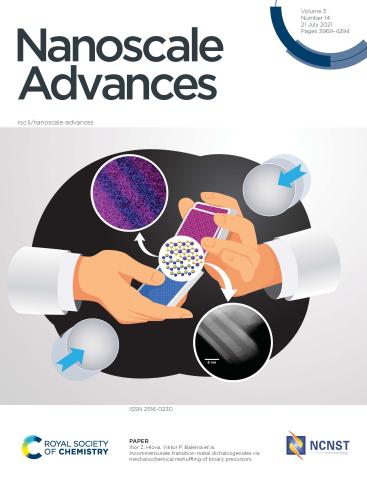Materials scientists can now shuffle layered compounds together, much like combining two different decks of cards. The technique, recently discovered by a team of researchers at the U.S. Department of Energy’s Ames Laboratory, is leading to development of new materials with unusual electron transport properties that have potential applications in next-generation quantum technologies.
The discovered technique has shown another unexpected and promising application in new materials design. The “reshuffling” approach can generate thermally stable three-dimensional (3D) heterostructures from layered transition metal dichalcogenides (TMDCs). These are van der Waals materials composed of metal nanolayers sandwiched between two other layers of chalcogens – sulfur, selenium, or tellurium. Similar to graphite, these compounds can be exfoliated into 2D layers, which display unique electron transport properties and quantum phenomena.
materials design. The “reshuffling” approach can generate thermally stable three-dimensional (3D) heterostructures from layered transition metal dichalcogenides (TMDCs). These are van der Waals materials composed of metal nanolayers sandwiched between two other layers of chalcogens – sulfur, selenium, or tellurium. Similar to graphite, these compounds can be exfoliated into 2D layers, which display unique electron transport properties and quantum phenomena.
“TMDCs are very intriguing to researchers as a possibility for applications in renewable energy, catalysis and optoelectronics, to name only a few,” said project leader Viktor Balema, a Senior Scientist in the Divisions of Materials Sciences and Engineering at Ames Laboratory. “Our goal in research has been the development of such re-assembly methods for these layered materials, which are not only efficient, but also scalable and cost effective in production.”
Researchers at Ames Laboratory have been successful in overcoming one of the major challenges of composing these layered materials – the difficulty of sandwiching together atomically dissimilar, incommensurate, materials – through the use of mechanochemistry that is facilitated by ball milling.
“Now, we have demonstrated that we can mechanochemically design novel layered heterostructures, control their composition and tune their properties,” said Ihor Hlova, a scientist in the Divisions of Materials Sciences and Engineering at Ames Laboratory. “This opens a way to a variety of different combinations – the possibilities are basically unlimited.”
So far, this approach has proven to work on several very different groups of compounds and continues to surprise the scientists with new discoveries. The materials prepared using the team’s “layers-reshuffling” technique have already shown broad range of electron transport properties ranging from semi-conductivity to metallic conductivity, depending on the building blocks involved.
The research was funded in part by Ames Laboratory’s Laboratory Directed Research and Development Program. Theoretical modeling helped to better understand the experimental results and plan the path forward for this research; and an extensive collaboration with colleagues from the Petro Sahaidachnyi National Ground Forces Academy and the Ivan Franko National University in L’viv (Ukraine), and Texas A&M University added much needed capabilities to the project.
The research is further discussed in the paper “Incommensurate transition-metal dichalcogenides via mechanochemical reshuffling of binary precursors,” authored by Ihor Z. Hlova, Prashant Singh, Serhiy Z. Malynych, Roman V. Gamernyk, Oleksandr Dolotko, Vitalij K. Pecharsky, Duane D. Johnson, Raymundo Arroyave, Arjun K. Pathak, and Viktor P. Balema; and featured inside the front cover of Nanoscale Advances.
Ames Laboratory is a U.S. Department of Energy Office of Science National Laboratory operated by Iowa State University. Ames Laboratory creates innovative materials, technologies and energy solutions. We use our expertise, unique capabilities and interdisciplinary collaborations to solve global problems.
Ames Laboratory is supported by the Office of Science of the U.S. Department of Energy. The Office of Science is the single largest supporter of basic research in the physical sciences in the United States, and is working to address some of the most pressing challenges of our time. For more information, please visit https://energy.gov/science.
Contacts:
Viktor Balema, Division of Materials Sciences and Engineering, 515-964-6666
Laura Millsaps, Ames Laboratory Communications, 515-294-3474
